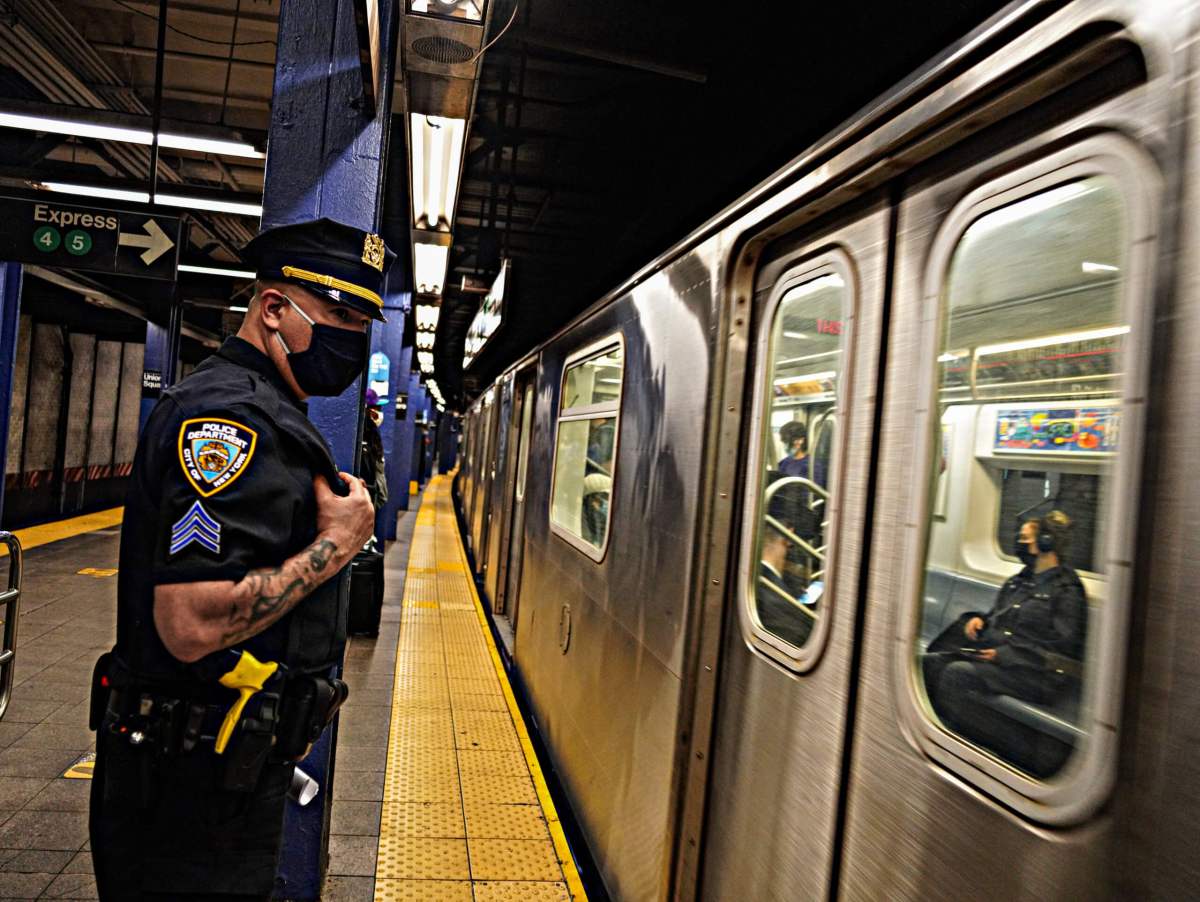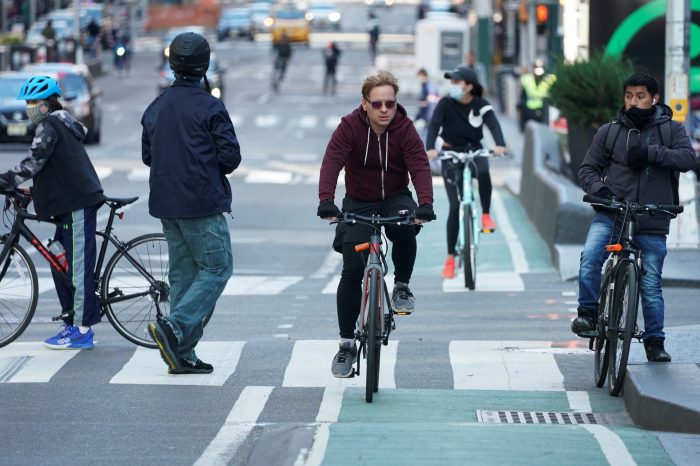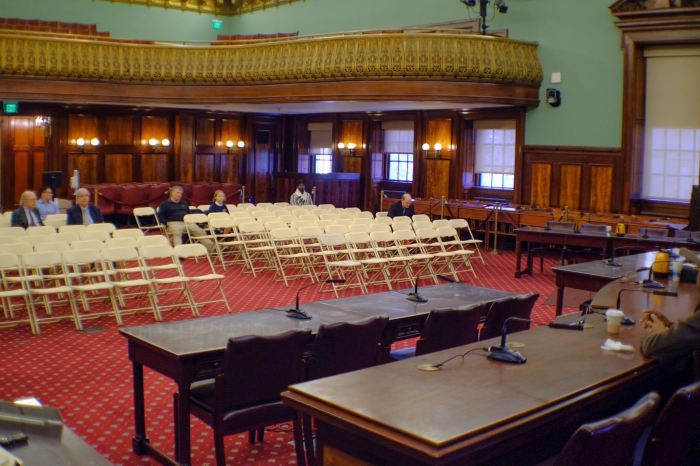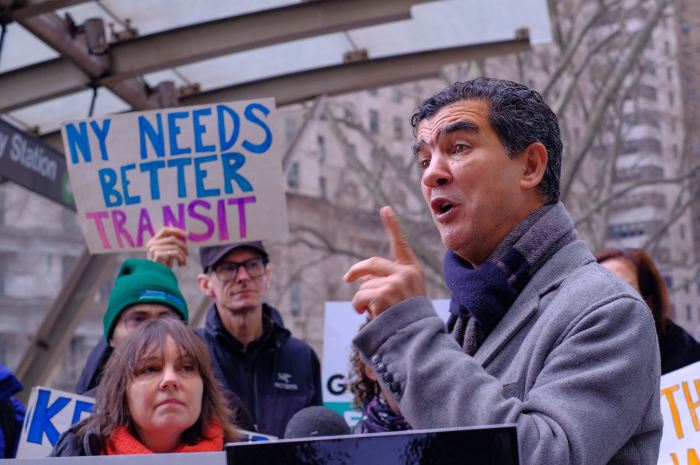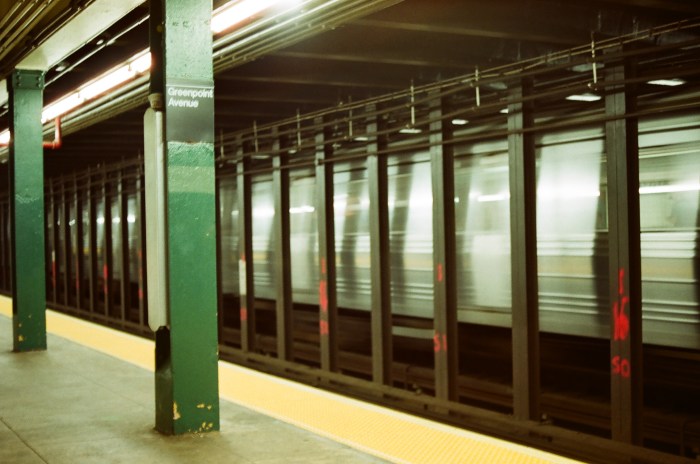Transit advocates want city and state leaders to tackle what activists said are the root causes of subway safety concerns, rather than throwing law enforcement at the problems plaguing public transportation.
The group Riders Alliance released its so-called Riders Plan for Public Safety detailing how government policies can improve the lives of commuters and New Yorkers struggling with homelessness instead of reverting to “broken windows” policing that targets low-level offenses.
“Rather than have the system be a sort of political football or an opportunity for people to demagogue about crime… we want to look deeply at the root causes of what are intersecting crises facing public transit, and charge the responsible elected officials so we can hold them accountable for actually solving these underlying problems,” said the group’s policy director Danny Pearlstein at a press conference outside Barclays Center in Brooklyn Sunday, June 12.
The advocates and politicians said that Governor Kathy Hochul and Mayor Eric Adams must focus on making service better to lure back riders as the MTA carries still below 60% of pre-pandemic subway trips on weekdays.
The state-controlled MTA could boost train and bus service to running at least every six minutes, according to the advocates, staff stations with non-law enforcement transit workers to help riders, and make stations more welcoming with seating, open restrooms, and better access for people with disabilities.
“When we talk about also public safety in the transit system, we’re not just talking about more cops,” said Brooklyn Assembly Member Phara Souffrant Forrest. “Can I come from a night shift — or any shift — and be able to sit down rest my feet while I wait for train to arrive in 20 minutes?”
The report also said that state lawmakers and Hochul must pass the tenant protection bill known as Good Cause Eviction and make it easier for landlords to convert commercial properties into affordable housing, to ease the crunch of housing supply, both of which will help address the housing crisis in the Empire State.
The advocates further charged that Mayor Adams and the city should rely less on heavily policing the transit system, and instead expand city programs for cheaper fares, housing for the homeless, and upgrade street-level drainage so the subway system doesn’t become a flooding sewer during extreme weather.
Adams deployed a record 3,500 cops into the subways amid his push to make the Boys in Blue an “omnipresence” underground. That’s nearly 10% of the NYPD’s 36,000-strong force diverted toward transit, which accounts for less than 2% of the city’s crime numbers.
New Yorkers face more dangers in the streets amid rising traffic violence and deaths due to crashes, the report argues.
According to NYPD statistics, 19,715 people have been injured in crashes so far this year, about 127 per day, compared to 989 crimes in transit, a rate of roughly six per day.
The mayor has vowed to crack down on those breaking the MTA’s rules, like sleeping on a train or panhandling, as well as a renewed focus on fare evasion, but one advocate said that cops need to be tasked with targeting more serious crime.
“That does not mean forcibly removing homeless people, that does not mean provoking violent encounters with New Yorkers struggling with their mental health, that does not mean loitering upstairs getting paid overtime to nab teenagers hopping over the turnstile — that’s not it,” said Derrick Holmes, a digital strategist for Riders Alliance.
The report report calls on the city to double the eligibility threshold for its so-called Fair Fares program, which offers half-priced MetroCards to New Yorkers living at or below the federal poverty line.
The annual income to qualify for a household of four is $27,750, according to the U.S. Department of Health and Human Services. A single person can’t even make more than $13,590 a year to get the deal, which is less than half the salary of someone working full time at the city’s minimum wage of $15 an hour.
Under Riders Alliance’s proposal Fair Fares would cap at 200% of the federal guideline so a family of four could make around $50,000 can still qualify.
One Bronx mother of four using the program said the city ought to raise the eligibility.
“They may be like a dollar or two over and they’re excluded,” said Cynthia Kozikowski told amNewYork Metro. “It would be a good idea to maybe stretch it up a little bit.”
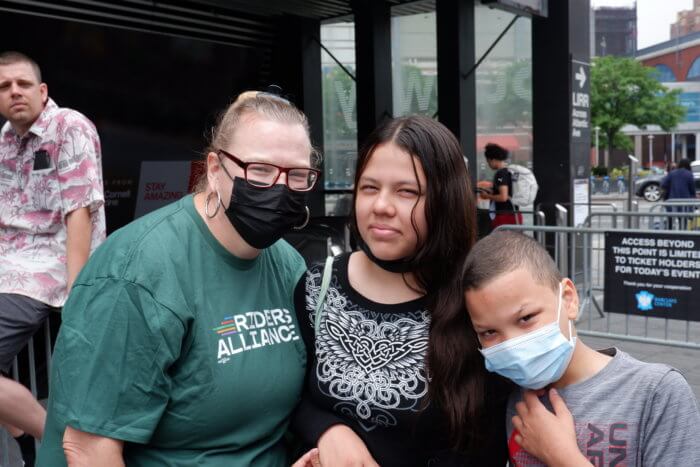
Hizzoner and the City Council agreed to make the half-price MetroCard for low-income New Yorkers known as Fair Fares program permanent and restore its funding to about 70% of its pre-pandemic levels in this year’s budget, but the city leaders decided against lifting the limit in this year’s spending plan.
The city should also stop sweeps of the unhoused and instead add 3,000 single-occupancy rooms and stabilization beds immediately. The municipal budget, which Mayor Adams and Speaker Adrienne Adams agreed to on Friday, proposes to add less than half that, 1,400 new beds by mid-2023.
The Mayor must also stop NYPD from targeting street vendors, as cops did in a recent high-profile case when a officers cuffed and strip-searched a seller at Broadway Junction station in Brooklyn in late April.
Adams spokesperson Fabien Levy pointed to a city panel on street vendors which recently recommended relaxing rules and cutting red tape for the curbside hawkers — but not lifting a decades-old cap on permits, something activists have been calling for for years.
Levy also noted that Adams pledged to invest $22 billion over the next decade to build and preserve housing units tied to certain income levels, and city outreach workers diverting more than 1,300 New Yorkers in the subway system toward shelters.
An MTA spokesperson said straphangers wanted a safe commute and that the agency appreciated the efforts by city and state leaders.
“Subway riders want reliable, safe, comfortable service and they don’t want to be harassed,” said Aaron Donovan in a statement. “We appreciate the efforts by Governor Hochul and Mayor Adams to enhance social services for those taking shelter in transit, while adding mental health professionals, and also the NYPD’s commitment to deploy visible police officers on platforms and trains to enforce subway rules.”



